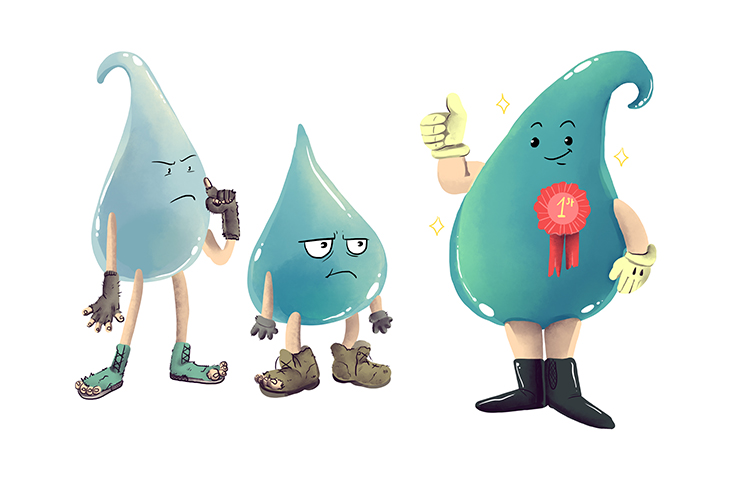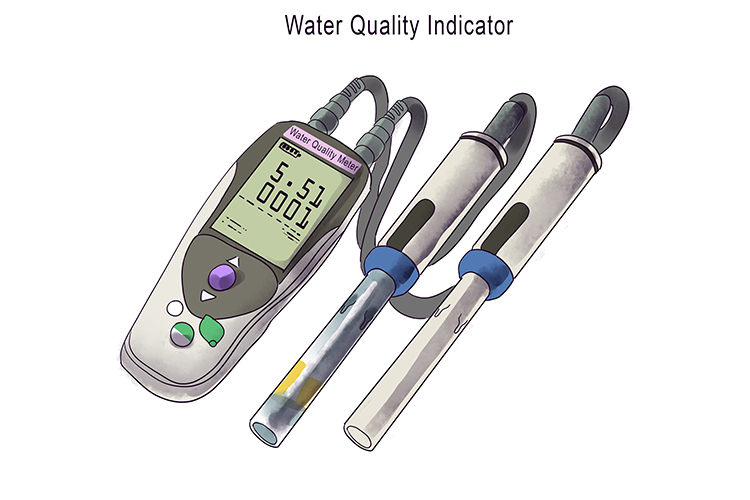Water Quality – Quality can be measured in terms of the chemical, physical and biological content of water
The most common standards used to assess water quality relate to health of ecosystems, safety of human contact and drinking water.
To remember the meaning of the term Water Quality, use the following mnemonic:
One of the water droplets won a rosette for quality (water quality).


Electrical conductivity measures the ability of water to conduct an electrical current. The higher the concentration of dissolved charged chemicals (also known as salts) in the water, the greater the electrical current that can be conducted. Charged ions include calcium, potassium, chloride and nitrates. A higher figure indicates pollution.
Water quality relates to the suitability of water for drinking, recreational uses, and as habitat for aquatic organisms and other wildlife. Water can easily be polluted by industrial leakages and the run-off of pesticides, fertilisers and other chemicals from agricultural activity. Diseases, including cholera, can spread in water.
While high-income countries might pride themselves on excellent domestic water supplies, many do not measure up when it comes to natural waterways and lakes. For instance, in England, the Environment Agency reported in 2020 that every river, lake and stream in the country was polluted to some extent.




